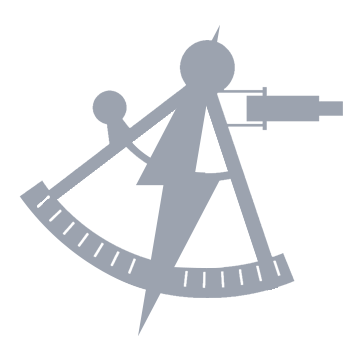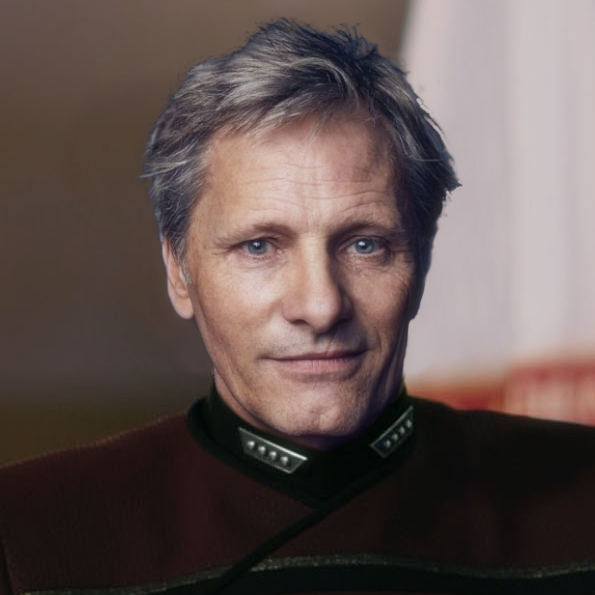The stars raced by. They looked the same, but it didn’t feel the same. She’d been to the far end of the galaxy and back again, but it wasn’t the same as what she’d left. Not with so many gone, those lost in their fall, those sacrificed in their return, and those departed in the aftermath. The nightfall had shattered her family. They said time would heal, but really, it had only made her numb. Captain Cora Lee was a stranger in her own body, a ghost going through the motions more than anything else.
Beside the young commander of the Ingenuity stood Lieutenant Commander Alonso Romero, an executive officer who, on paper, complemented her far better than the man who’d stood beside her prior. But that didn’t mean she didn’t miss Sherrod. For all his quirks and his stick in the mud attitude, Lieutenant Commander Sherrod Allen had always meant well, and he’d died because she did exactly what he told her not to do.
At the front of the bridge sat a new face too. Lieutenant Yasmin Shalev had years of experience on their prior helmsman, the young Elyssia Rel. Shalev was sharp and driven, a skilled pilot and a competent officer, but Captain Lee missed the counsel of the young ensign before her, a girl with a heart and wisdom beyond her years. Elyssia was not dead, at least. That was more than could be said for the others. But she’d lost herself in their return, her soul shattered by the loss of her love, a loss harder than when she’d died herself, and now the ensign was flying small craft off Archanis Station in an effort to find herself once more.
Belowdeck, there were new faces too, a new doctor, Lieutenant Alex Lister, and a new science chief, Lieutenant Josh Brunell, along with many new junior officers she hadn’t even met yet. Lister lacked the confidence of Krer Feyir, but there was nothing she could do to keep the Bajoran after their return. He fled off the Ingenuity to a new posting, just as he’d come to them fleeing a past trauma. Brunell, at least, seemed like someone she was going to get along with, a civil engineer from the Advanced Science, Technology and Research Activity.
The thing though was, for as much as she liked some of them, each of these new faces were also a reminder of the old face now gone. The lucky had simply moved on, but many – far too many – had been left in the stars.
At least she still had Dani Raine, her right hand in the engine bay, along with the dynamic duo at tactical and ops, Rafael Cruz and Kellan Seltzer. They’d all been kids when they had come aboard, but if she was honest with herself, she’d been one too back then, an engineer playing the part of CO. But no more. Not since their stranding on the far side of the galaxy. Alone. No one to depend on. Just her and… and Captain Lewis.
As she thought of the deceased hero, her heart fell. His was the voice she missed the most. When she’d first met him in the aftermath of Nasera, he – a danger at best, and a war criminal at worst – terrified her. At least up until they found themselves stranded together in the deep. There in their isolation, she’d found something special beneath his bristly exterior, a man, a mentor, a father almost, a guardian who committed every ounce of his being to their cause, their mission to get the crew home. In the end, he got them home, but it had cost him every ounce of himself. He went into the long night to see to it that Ingenuity made it home.
She missed him. She missed them all. The hardest part of it, too, was that the galaxy didn’t care. It had moved on. It just kept moving. And what could she do but try to keep up?
Behind her, the turbolift hissed open, and a lieutenant commander in teal stepped out.
“Captain,” announced Dr. Karl Verhoeven as he advanced forward towards the command island. “We need to raise the Kennedy at once.” He spoke not with authority, but rather simply as if it was a matter of fact, never considering that such a demand leveled against a senior officer would be atypical, if not straight inappropriate.
Lieutenant Commander Romero glared disapprovingly at the lanky officer with unkempt hair, a man who was very much the opposite of him in every way.
Captain Lee, though, took a softer tact as she tried to pull herself back to the present. “Good afternoon to you too, Dr. Verhoeven,” she smiled lightly. She knew his type, an academic who meant well, an esteemed research fellow who wore the uniform not because of what Starfleet was, but what it offered his research. Whether it was Verhoeven, or it was Brooks, Sena, and the rest of the ASTRA lot, none of them fit neatly into Starfleet’s box of protocol and process, and, honestly, she found it a bit refreshing. “Going that well in the lab, huh?”
“There is nothing well when it pertains to Lepia IV,” Dr. Verhoeven shook his head, the sarcasm in Captain Lee’s question passing right over him. “Nothing at all. I need to speak with Ambassador Drake at once.”
Captain Lee looked over at operations. “You heard the man.” She wasn’t one to doubt that if one of the ASTRA people said something needed to be done, it probably did. “Let’s get him on the horn, Kellan.”
“Stand by,” Ensign Seltzer nodded as he queued it up.
A moment later, the viewscreen was overtaken by an image from the bridge of the USS Kennedy. Standing centerframe was Captain Ria Alleyne, the young captain of the Norway class diplomatic courier, and to her right was the elder admiral, Ambassador Michael Drake.
“Good to see you again, Cora,” Ambassador Drake smiled warmly. He liked the captain of the Ingenuity, just like he liked the captain standing at his own side aboard the Kennedy. Alleyne and Lee, both, were the new generation, bright young leaders that embodied what he wanted to see for the next era of Starfleet. They reminded him of his daughter, rest her soul. “What can we do for you?”
Although it was Captain Lee that he’d addressed, it wasn’t her that responded. Instead, Dr. Verhoeven stepped center stage, in front of the captain and her first officer. “Ambassador, we’re still a few days out, but this can’t wait,” he explained without skipping a beat, not put off at all by the pips on the old man’s collar. “Based on my review of the data collected by Ensign Lunaire, I believe that, on Lepia IV, we are looking at a mid-stage pan-epiphytotic mycosis event.”
Ambassador Drake took himself as a well-studied man, but sometimes he wondered if these science wonks specifically went to the thesaurus to find words he didn’t know. “In English?”
“The fungal species on Lepia IV is a significantly more virulent substrain of the one that afflicted the Meronia Cluster back in 2399,” Lieutenant Commander Verhoeven replied. “My initial modeling suggests an R naught potential between 7.8 and 14.2, which means it is essential that you immediately institute a quarantine of Lepia IV.” The words came out firmly, maybe stronger than he’d intended, but he was highly convicted about the need. So much depended on it.
The ambassador stroked his chin, considering the microbiologist’s words. He knew the competence of Reyes’ team, but analytical skills did not always translate to pragmatic solutions. “That’s a quite significant escalation you’re suggesting, Dr. Verhoeven.”
“But not an unnecessary one,” Dr. Verhoeven insisted, not backing down.
“The people of Lepia IV are already skeptics of the Federation,” Ambassador Drake explained. “And not wrongly so. They see us as little more than a name on the map, and the progress that we’ve made here, if we were to do as you say, it would almost certainly undo it.” He could see it now, the reaction from the foreign minister if suddenly they locked his world down.
“No offense to the people of Lepia IV, but their feelings towards us are not my chief concern,” Dr. Verhoeven countered. “The health of the galaxy is. You must prevent the transfer of biomatter off-world, and investigate all known shipments of biomatter that have left Lepia IV in the last six months.” He paused for a moment, realizing he was likely coming off a bit more commanding than he meant to. “An R naught of this magnitude, when laid atop a system of interstellar trade, doesn’t lead anywhere good, and if the genie gets out of the bottle, it will be quite hard to put it back.”
“I don’t doubt your judgement, Dr. Verhoeven,” Ambassador Drake smiled. “But Lepia IV is not a world often visited. I see no reason to upend the apple cart unless we have to.”
The concern on Dr. Verhoeven’s face was palpable. This wasn’t a matter of convenience. It was a matter of the health and safety of the galaxy. “But sir…”
Ambassador Drake could tell that the microbiologist wasn’t tracking what he was saying, so he elaborated on his position. “The last trade convoy that passed through here did so nearly four months ago. We will work with Polaris Squadron to track that one down.”
Dr. Verhoeven nodded. The low traffic volume was good news, and he had no doubt that his colleagues would be able to handle that. If, though, the blight had escaped on that transport, it would double the importance of solving the issue on Lepia IV quickly so the solution could be reproduced wherever else the blight had become entrenched.
“And further, if any additional passerbies do decide to pay Lepia IV, we will confront the notion of a quarantine at that time,” Ambassador Drake acknowledged. “But for now, there’s no need. We will simply hold in orbit and keep watch until your team arrives.”
“A perfectly reasoned approach,” Dr. Verhoeven agreed. He probably should have started there, he realized, mapping actual transit volumes into his metapopulation network propagation model rather than assuming homogeneous sector-averaged dispersal dynamics.
Now it was Captain Alleyne’s turn to ask a question. “Dr. Verhoeven, what of my crew? We have been making regular trips down to the surface, delivering supplies and repairing equipment. Do I need to be concerned for them?”
“Based on its genetic structure and the observed behavior of the Archanis-2399-Alpha variant, this blight appears to be limited to phytobiotic growth vectors,” Dr. Verhoeven explained. “I cannot rule out the potential for secondary aerosolization through spore release or other environmental mechanisms, which could produce physiological effects if inhaled, but any such response would most likely be toxicological rather than pathogenic in nature.”
“As in we might get sick, but we won’t get infected?” Captain Alleyne confirmed.
“Exactly,” Dr. Verhoeven nodded. “And at this point, I can’t say whether that’s even likely given the nil-to-limited physiological response observed with the prior strain. Still, when it comes to any mycological species, there’s always the potential for an exposure response, so something best to keep an eye on.”

 Bravo Fleet
Bravo Fleet








